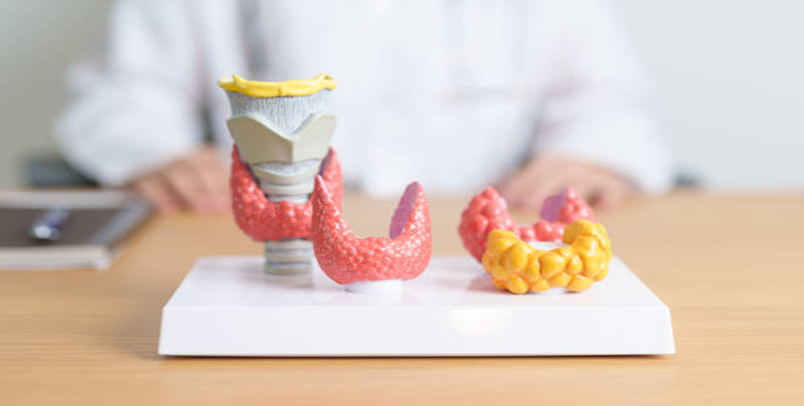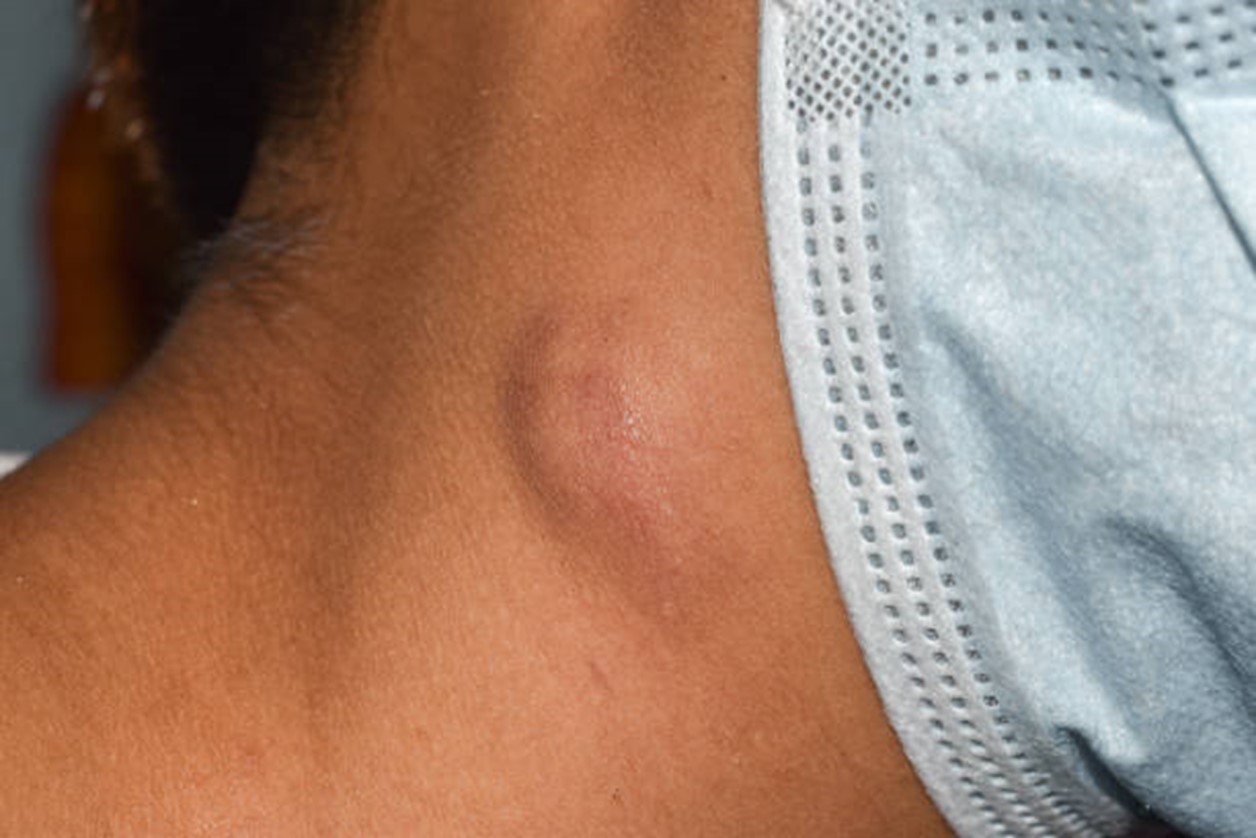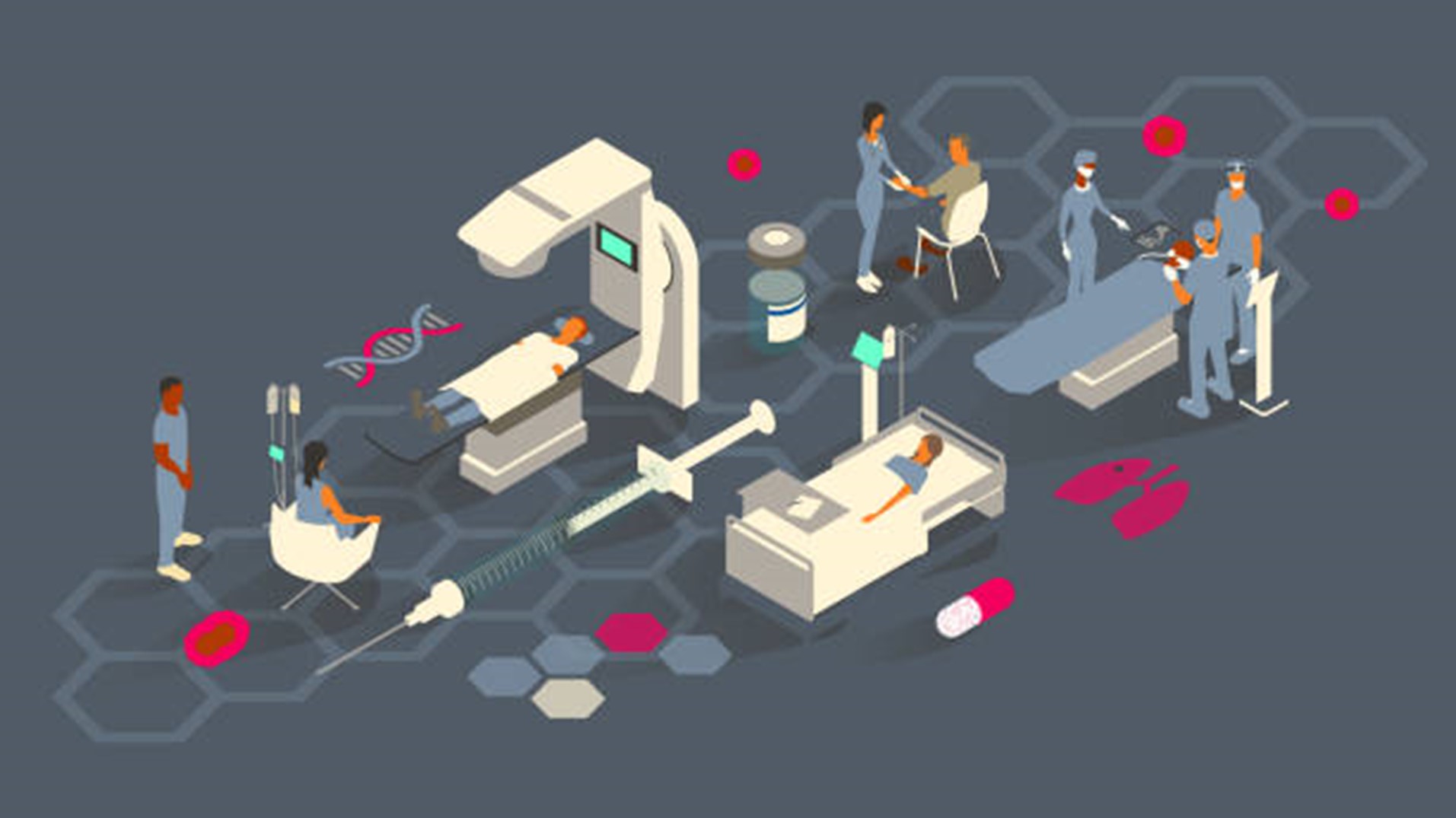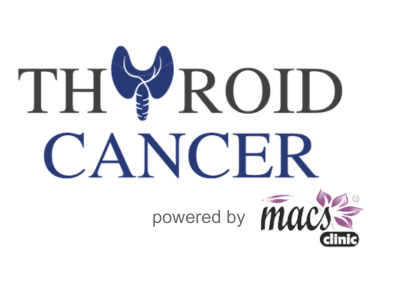Papillary Thyroid Cancer
This page discusses papillary thyroid cancer, its symptoms, and diagnosis and treatment options. Papillary thyroid cancer carries a favorable prognosis and is commonly treated with surgery, often with successful outcomes. Papilla carcinoma of the thyroid has a cure rate of nearly 95% when treated by experts. The primary treatment for papillary thyroid cancer is thyroidectomy. This site is developed with the help of Dr. Sandeep Nayak from MACS Clinic, Bangalore. Dr. Nayak introduced the revolutionary RABIT technique in robotic thyroidectomy for better patient outcomes. This minimally invasive thyroid surgery offers surgery without scars with added advantages like precision.
Let’s explore the details of papillary thyroid cancer next.
What Is Papillary Thyroid Cancer Or Carcinoma?
The thyroid is situated at the front of the neck. It plays a crucial role in regulating various bodily functions through hormone secretion. It is responsible for producing thyroid hormone or thyroxine.
To learn more about its functions, check out our informative video series.
Papillary thyroid cancer is also known as papillary carcinoma. It originates in the follicular cells of the thyroid gland. It’s the most prevalent form of thyroid cancer, constituting 80-85% of all cases. Papillary carcinoma of the thyroid gland progresses slowly. It usually affects only one lobe of the thyroid gland. However, there may be instances of multiple cancerous centers within the gland.

Quick Facts:
Thyroid cancer is three times more likely to occur in women than in men.
It can affect individuals of any age, but it’s most prevalent between 25 and 45. This is the disease of the young.
Now, let’s dive into the papillary thyroid cancer subtypes to gain a comprehensive understanding of this condition.
Types of Papillary Thyroid Cancer
There are various subtypes of papillary thyroid cancers or papillary thyroid carcinoma. Among them, the follicular subtype, or mixed papillary-follicular variant, is the most prevalent. Other subtypes are less common. However, they tend to be more aggressive compared to the classical type. Types of potential papillary carcinoma include:
Columnar Papillary Thyroid Cancer:
This subtype is characterized by elongated cells within the tumor.
It’s relatively less common but requires careful management due to its unique features.
Tall Cell Papillary Thyroid Cancer:
Tall cell variant features taller-than-normal cells, making up the tumor.
It’s known for its aggressive nature and may require more extensive treatment.
Insular Papillary Thyroid Cancer:
Insular variant involves the growth of tumor cells in clusters, resembling islands.
It’s less common and may present challenges in diagnosis and management.
Diffuse Sclerosis Papillary Thyroid Cancer:
This subtype is characterized by widespread fibrosis or scarring within the tumor.
It’s relatively rare and may require specialized treatment approaches for optimal outcomes.
Have a Question?
How serious is papillary thyroid cancer?
All cancer types demand medical attention and carry the risk of spreading to other body parts. However, with papillary thyroid cancer, the outlook is generally good. Although serious, even papillary thyroid carcinoma is rarely fatal. Most patients respond well to papillary thyroid carcinoma treatment. The cure rate of papillary carcinoma is more than 95% when it is stage 1 (look up the staging of thyroid cancer).
Curious about who’s more susceptible to papillary thyroid cancer? Let’s delve into the factors that increase the risk.
Understanding Thyroid Cancer Causes And Risk Factors

The exact causes of papillary thyroid cancer remain unknown. However, certain factors can increase a person’s risk of developing thyroid cancer.
Gender: Globally, women are about three times as likely to develop thyroid cancer as men.
Age: The majority of papillary thyroid cancer cases occur in individuals around 30 years old.
Radiation Exposure
People who’ve been exposed to high levels of ionizing radiation have higher rates of this cancer. This could happen from intense radiation treatments to the neck during childhood for cancer or certain noncancerous conditions. Also, radiation from nuclear plant accidents can cause a significant rise in papillary thyroid cancer cases.
Family History:
A family history of thyroid cancer or certain genetic conditions can increase the likelihood. Roughly 5% of papillary thyroid cancer cases are linked to inherited conditions like:
Familial adenomatous polyposis (FAP)
Cowden syndrome
These syndromes increase the risk of developing papillary thyroid cancer, often at a younger age than usual. Additionally, genetic mutations in genes like BRAF, and RAS are also associated with an increased risk of papillary thyroid cancer.
Certain Health Conditions:
Conditions like goiter and autoimmune diseases can also raise the risk.
Goiter, characterized by an enlarged thyroid gland, can sometimes lead to the development of cancerous cells.
Autoimmune diseases like Hashimoto’s thyroiditis and Graves’ disease involve inflammation of the thyroid gland. This may increase the likelihood of malignant transformation over time.

Of thyroid cancers in children, papillary carcinoma prevails as the predominant type, comprising approximately 90%.
Have a Question?
Understanding the Metastasis Of Papillary Thyroid Cancer
Papillary thyroid cancer can spread to nearby lymph nodes in the neck. Lymph nodes are small, bean-shaped structures that are part of the body’s lymphatic system. They function as barriers, capturing viruses, bacteria, and other pathogens to prevent them from spreading to other areas of the body. In the neck, lymph nodes are located in clusters and drain lymph fluid from the head and neck area.
From the lymph nodes, the cancer may potentially metastasize (spread) to distant organs like the lungs or bones. About 30% of patients are diagnosed with metastatic papillary thyroid cancer. When any cancer spreads to other organs, it affects the treatment options and prognosis. However, even with spread, papillary thyroid cancer can still be effectively treated.
Wondering how you will recognize thyroid cancer? Let’s delve into the common signs together.
Symptoms of Papillary Thyroid Cancer


Have a Question?
Let’s understand how papillary thyroid cancer is diagnosed.
Diagnosing Papillary Thyroid Cancer
Diagnosing papillary thyroid cancer involves various approaches to ensure accuracy and thoroughness. The assessment is called Quadruple Assessment. Below are the diagnostic methods commonly employed by expert thyroid surgeons:
Diagnosing papillary thyroid cancer involves various approaches to ensure accuracy and thoroughness. The assessment is called Quadruple Assessment. Below are the diagnostic methods commonly employed by expert thyroid surgeons:
Physical examination:
The doctor conducts a thorough examination of the neck to detect any abnormalities or nodules.
Ultrasound imaging:
Ultrasound imaging uses sound waves to create images of the thyroid gland and surrounding structures. This imaging test helps medical experts identify any suspicious nodules. The report will classify as one of the following :

TI-RADS 1: normal thyroid gland.
TI-RADS 2: benign conditions (0% risk of malignancy)
TI-RADS 3: probably benign nodules (<5% malignancy)
TI-RADS 4: suspicious nodules (5-80% malignancy) …
TI-RADS 5: probably malignant nodules (>80% malignancy)
TI-RADS 6: biopsy proved malignancy.
CT scans, MRI scans, or PET scans, aid in evaluating the extent of cancer spread beyond the thyroid gland. These are usually not needed for thyroid cancer unless the disease is large.
Fine needle aspiration cytolog (FNAC):
FNAC is a procedure where the doctor uses a thin needle to extract cells from the thyroid nodule. The cells are then sent for examination under a microscope to diagnose. The report will say one of the following.
- Bethesda 1: Nondiagnostic has 1–4% risk of cancer.
- Bethesda 2: Benign, 0–3% risk of cancer.
- Bethesda 3: Atypia of undetermined significance (AUS)/follicular lesion of undetermined significance (FLUS). This has 5–15% risk of cancer.
- Bethesda 4: Follicular neoplasm (FN)/suspicious for follicular neoplasm (SFN). This has 15–30% risk of cancer.
- Bethesda 5: Suspicious for malignancy (SM). This has 60–75% risk of cancer.
- Bethesda 6: Malignant. This has 97–99% risk of cancer.
Thyroid function test (TFT):
Blood tests help assess the levels of thyroid hormones. There are no specific markers associated with thyroid cancer. The thyroid hormone levels are not affected by cancer.
Molecular testing:
These are newer tests that are emerging help the clinicians to decide management. Molecular testing involves analyzing genetic mutations or alterations in thyroid tissue samples. These tests aid in diagnosis and treatment planning. There are tests available to confirm the risk of a thyroid nodule being cancer on FNAC slide, especially for Bethesda 3 & 4 lesions on FNAC . However these are extremely costly at present.
Let’s delve into the array of treatment options for papillary thyroid cancer.
Have a Question?
Papillary Thyroid Carcinoma Treatment
Thyroid cancer experts employ a comprehensive approach tailored to each patient’s unique situation. Here are the treatment methods commonly utilized:
Primary Treatment – Surgery:
Thyroidectomy is a surgical procedure that involves removing the affected part or complete thyroid gland. The extent of surgery depends on size of the tumor. The surgery for thyroid cancer can be performed by conventional open surgery or robotic surgery by RABIT technique.
1 cm or less: Hemithyroidectomy (removal of half of the gland) is sufficient.
1 cm to 4 cm: There are centres offering hemithyroidectomy However, total thyroidectomy is preferable as it avoids unwanted second surgery and makes follow up easier.
More than 4 cm: Total thyroidectomy is the surgery of choose.
Lymph node dissection: The removal of lymph nodes for thyroid cancer is done only when the nodes are involved. This can be central compartment dissection (level 6) which are the nodes around the thyroid and functional neck dissection which involves removal of nodes on the affected side of the neck.
Robotic surgery has several advantages over open surgery.

Radioactive iodine therapy (RAI):
Following surgery, some patients may undergo RAI therapy to destroy any remaining thyroid cells. This treatment is especially effective for targeting any cancer cells that may have spread beyond the thyroid gland as well.
Hormone therapy:
After thyroidectomy, patients require lifelong thyroid hormone (thyroxine) replacement therapy. This replaces the thyroid hormones no longer produced by the gland. However, thyroxine is also used in high does to suppress thyroid cancer. This is monitored by keeping the level of TSH very low. This levels may be maintained for at least 2 years and differs from case to case.
The medical experts carefully monitor hormone levels and adjust medication dosage as needed to ensure optimal health and well-being.
Surveillance and follow-up care:
Regular monitoring and follow-up appointments with health professionals are essential to:
- track progress
- detect any recurrence of cancer
- address any potential complications or side effects of treatment
This ongoing care ensures the best possible outcomes for patients with papillary thyroid cancer.
Have a Question?
The thought of any treatment naturally brings to mind about the possible side-effects. Let’s explore some of the common side effects associated with treating papillary thyroid cancer.
Potential Side Effects And Complications Of Papillary Cancer Treatment
Following are the potential side effects and complications that may arise during treatment:
Side Effects of Surgery:
Common side effects of thyroid surgery include:
- temporary hoarseness
- difficulty swallowing
- neck stiffness
These resolve with time in most of the patients.
Scarring:
Surgical procedures may result in scarring on the neck if open surgery is performed. This can be permanent. When robotic surgery by RABIT technique or endoscopic surgery is performed, the scar is avoided.
Calcium Imbalance:
Surgery may damage the parathyroid glands, leading to low calcium levels in the blood. This is the most dreaded complication of thyroidectomy as the patient will have to take high quantity of calcium tablets if parathyroid glands are damaged. The documented risk of this is 4 to 6%. However with RABIT technique of robotic thyroidectomy we have been able to reduce the risk of permanent hypocalcaemia to less than 1%. Temporary hypocalcemia can occur in many cases, but, will reverse in few weeks to months.
Emotional Impact:
Coping with a cancer diagnosis and undergoing treatment can have emotional repercussions. These include anxiety and depression. However, it is a curable cancer for most of the patients.
Hypothyroidism:
Removal of the thyroid gland can lead to hypothyroidism requiring lifelong thyroxine hormone replacement.
Voice Changes:
There are 2 nerves that run close to thyroid gland. The recurrent laryngeal nerve ( responsible for normal voice) and external branch of superior laryngeal nerve (responsible for high pitched voice). Damage to the vocal cords during surgery may cause changes in voice quality. This risk is very low and is less than 0.01% in our series. Robotic surgery by RABIT technique offers better vision quality to the surgeon making it better possible to save these nerves.
Radioiodine therapy:
Common side effects of radio iodine therapy includes gastritis, parotiditis etc which as minor side effects. In the longer term there are some reported cases of blood
Recurrence:
Despite successful treatment, there is a risk of cancer recurrence. Ongoing monitoring and management is essential.
Patients need to discuss these points with your healthcare team. An understanding of the potential risks can help you make informed decisions.
Wondering about the factors that may affect the prognosis? Let’s find out.
What is the prognosis of papillary thyroid cancer?
Papillary thyroid cancer generally has a favorable prognosis, with a high survival rate. Most patients respond well to treatment and have a good quality of life after diagnosis. However, certain factors may indicate a more challenging outlook. These include:
Advanced stage at diagnosis
Older age
Presence of distant metastasis
Tumor size
Aggressive variants of papillary thyroid cancer

Have a Question?
How to Reach US!
Each year, our center welcomes many patients from all corners of the globe. With our extensive experience, we have streamlined the process to make it effortless for you to visit Bangalore for your evaluation, scans, biopsies, and surgery all in one trip. For your convenience, a significant portion of the follow-up can be conducted through online consultations. Additionally, we are committed to assisting you with postoperative treatment in your home country or city, eliminating the need for you to return to Bangalore, India.
Let’s head to the FAQ section where we address common queries with clarity and expert insight.
Frequently Asked Questions
Is survival possible with papillary thyroid cancer?
The outlook for papillary thyroid cancer is promising. Studies show that over 90% of adults survive for at least 25 years following treatment.
How does papillary thyroid cancer differ from other types of thyroid cancer?
Papillary thyroid cancer is distinct from other types due to its slow growth and favorable prognosis.
Can papillary thyroid cancer recur after treatment?
Recurrence of the cancer is possible but rare and can often be managed with additional treatment.
Are there any dietary or lifestyle changes that can lower the risk of developing papillary thyroid cancer?
There are no specific diet or lifestyle changes that can prevent papillary thyroid cancer. Maintaining a balanced diet and healthy lifestyle may support overall health.
How often should patients undergo follow-up screenings or tests after treatment?
Patients require regular follow-up screenings to monitor for recurrence or any new developments. The frequency of these screenings depends on individual factors and the doctor’s recommendation.
